IBU606 Week Four Assignment
.docx
keyboard_arrow_up
School
National University College *
*We aren’t endorsed by this school
Course
606
Subject
Business
Date
Apr 3, 2024
Type
docx
Pages
19
Uploaded by lpzare2
Week Four: IBP Project : StingAway
1
Week Four Assignment – IBP Project : StingAway
Tiare Secrest, 900465687, Julio Cesar Lopez - 023858570
IBU606 Global Business
Professor Matthew Jordan
National University
2/25/2023
Week Four: IBP Project : StingAway
2
Week 4 IBP Project StingAway
1.
Course No/Title
a.
IBU 606: Week 4 IBP Project StingAway
2.
Name of the Professor and Course Term/Month
a.
Professor Matthew Jordan, Winter February 2023
3.
Team Number and Designated Team Leader
a.
Group 6
b.
Team Leaders: Julio Lopez & Tiare Secrest
4.
Team member names, NU ID numbers.
a.
Julio Lopez, 023858570
b.
Tiare Secrest, 900465687
5.
Name of the Assigned Foreign Nation
a.
Australia
6.
Team Company Name and Logo (be creative) - Meaning of the company name, meaning of the company logo, company mission and structure.
Meaning of Company Name:
StingAway! We selected this name as our product is a stingray deterrent that can be worn as either a bracelet or anklet. “Most stingray injuries occur on the legs or feet after unwary people step on or disturb the animals in shallow water. It is clearly dangerous to swim directly over a stingray.” (Potter, 2006). A way to prevent injuries would be a repellent offered to swimmers in coastal areas to stay safe and
enjoy their recreational activities. In coastal areas, a repellent would be great to keep families safe and increase safety for swimmers and stingray species.
Week Four: IBP Project : StingAway
3
Company Logo & Meaning:
The company logo features the brand name as well as an image of a stingray. The logo is kept minimalistic so that it can be easily featured and read on the company’s product. The
stingray is shown to represent what our product deters.
Company Mission & Structure:
Our company’s mission is to deliver ocean safety, protecting beachgoers from stingray-
related injuries through preventative measures while advocating for marine education.
CEO: Tiare Secrest
CMO: Julio Lopez
7.
Tangible (not a service) new product and description (uses and benefits)
StingAway is a stingray deterrent that can be worn as a bracelet or anklet. The product is sleek and meant to fit comfortably on beachgoers while they participate in watersport activities or walking in the shallow water areas where stingrays are common. The product
features a secure fastener to ensure it stays on if strenuous activities occur. StingAway’s technology deters stingrays away from those wearing the product and thus helps prevent stingray-related injuries such as stings.
Week Four: IBP Project : StingAway
4
8.
Identification of the industry for the new product
There are many companies that produce repellent solutions in Australia and there are only a few companies that feature that type of product. The popularity of swimming is high in Australia, and they have a population of 25.77 million, their GDP stands at 1.64 trillion U.S. dollars, and life expectancy is averaged at 83.2 years of age. (O'Neill, 2022) Australia is one of the biggest importers in the world and according to a study published, “Australia is an export nation, generating yearly exports of around $195 billion and importing around $187 billion per year. The country has achieved a positive trade balance of around $8 billion, yet we also rely heavily on imports.” (Shonae, 2023) The sector that Stingway falls under would be Agriculture chemicals and products, that department code identifies which chemicals and products need to be registered or approved by the Australian Pesticides and Veterinary Medicines Authority (APVMA) and which products are exempt. The band with the product would meet very little resistance from the government and some other products that are similar have been introduced in the economy. The main competition comes from other manufacturers in the United States which have a similar design but are limited to just mail distribution. To better position Stingaway, price and distribution would be strategically thought out to capture the interest of the high swimmer population in Australia marketing it with better pricing to gain a quick entrance to the market.
9.
Marketing Objectives/Strategies/Tactics
1.
Product range – What is our total, core and auxiliary product? What are the product ingredients? What are the product features? How is the product used? What are the
Week Four: IBP Project : StingAway
5
benefits of our Product? How much we buy/produce? Where do we buy/produce? How do we package and label our product?
1.
The core product is safety and peace of mind for our consumers when doing activities in the ocean. The total product includes a sleek and comfortable bracelet/anklet that can help prevent stingray-related injuries. The product is used by being worn as either a bracelet or anklet on an individual when in the ocean. StingAway’s technology deters stingrays away from the individual wearing the product. The benefits of our product include ocean safety for beachgoers and prevention from stingray-related injuries. We package our products in a small recyclable box with our logo found on the top of the box as well as on the bracelet/anklet itself. Main competitor SharkBanz has sold over 117,727 units at a 130 price tag on Amazon according to their website. (Flexport, 2023) Positioning StingAway at a lower cost will be advantageous and allow the company to compete by making a more affordable option available. A forecast for units would be around 200,000 at a cost of 100 dollars per unit, by meeting the target revenues can reach around 20 million which will surpass the current market gain that Sharkbanz has.
2.
Target consumers/market segments – Who we market it to? What is our target customer’s profile? What are our market segments?
1.
We market to beachgoers within the coastal cities along Australia. Our target customer’s profile includes active individuals who partake in watersports or swimming at the beach. Our
target consumer’s demographic age ranges from elementary school to older adults and no specific targeted gender or race. Target consumers include beachgoers, surfers, swimmers, etc. who live in Australian beach/coastal areas. Geographic segmentation includes suburban
Week Four: IBP Project : StingAway
6
locations on the coast, specifically southern Sydney, New South Wales, and the northern coast of Australia.
3.
Target markets – Where do we find our customers? Where do we market?
1.
Our customers are found on the Australian coast, many near popular beaches where swimming and other water sports are common. We market heavily in popular beach areas such as New South Wales, where stingray injury incidents are very high. Within this region, “between September 1, 2013, and December 31, 2016, there were 116 incidents involving stingrays” (Hoh, 2017). We market in southern Sydney and the northern coast of Australia as
these regions experienced the “greatest number of calls made to triple-0 relating to a stingray incident” (Hoh, 2017). We market our products in local water sports stores and coastal hotels
to target our specific market segment. In 2018, Australia had nearly 9 million tourists visit with a majority traveling to the coastal areas (Monaco, 2018). Australia’s marine attractions and coastlines are the most popular places visited by tourists. The Great Barrier Reef recorded around “2.3 million international and 1.8 million domestic visitors per year” (Becken, 2016). These coastal areas with lots of marine life are where we find our customers.
One particular type of coastal tourism in Australia that categorizes our target market is beach and surf tourism. This is defined as the most prevalent tourism “and is relevant along the whole coastline of Australia… typical activities include walking, swimming, sunbathing, surfing, sports events” (Becken, 2016). Individuals participating in such activities are our target customers as they are most at-risk for stingray injuries in the ocean.
4.
Market share/market growth – What is the size of the total market? How much we market? When we market?
Your preview ends here
Eager to read complete document? Join bartleby learn and gain access to the full version
- Access to all documents
- Unlimited textbook solutions
- 24/7 expert homework help
Related Questions
I need the answer within 15 minutes
arrow_forward
Table 3 gives time estimates in weeks for each activity (Durations are Time Expected obtained using PERT)
Activity
Preceded
1
Order review
2
Order vendor parts
3 Produce standard
parts
4 Design custom parts
Software development
5
6 Manufacture custom
parts
7 Assemble
8
Test
Duration
5
15
20
13
18
10
10
5
1
1
1
4
2,3,6
2,5
Resources
Ryan
Carly
Ryan
Lauren
Connor
Ryan
Dawn
Test
Assuming that you have been engaged to programme the project activities indicated in Table 3 and Figure A8.1B (Air
Control Project: Time Plan without Resources),
USE CCPM (Critical Chain Project Management) to ESTIMATE the project duration by showing each and every stage of
your programming process (indicate technical dependency with resources imposed).
arrow_forward
Q1: You have the following activities of a project and the time to complete each one (note that the time in weeks)
Required:
1 - Draw a network of project activities
2 - Determine the project implementation schedule.
3 - Calculate the completion time for the project implementation and the slack time for each activity.
Activity
Duration
Star
Finish
Slack
ES
LS
EF
LF
1-2
2
1-3
5
2-4
9
2-5
7
2-6
12
3-6
10
4-6
7
4-7
8
5-7
3
6-8
5
7-8
6
8-9
4
Q2: Draw the Network Diagram and determine the Critical Path and duration of the project (in days)
Activity
Duration
Predecessor(s)
A
2
-----
B
5
-----
C
9
A
D
7
A
E
12
A
F
10
B, C
G
7
D
H
8
E
I
3
F
J
5
H, G
K
6
I, J
L
4
H, G
M
3…
arrow_forward
Q3: Kuala Lumpur Hospital is renovating the emergency department to
accommodate more patients during the current pandemic "COVID-19". You have
engaged as the project manager for this project and divided the tasks into 11
activities.
ALL RIGHTS RESERVED
CONFIDENTIAL
2
CONFIDENTIALGUC/ JAN - APR / MPSM230
You are required to draw the Critical Path Method (CPI) and complete all the
necessary calculations to figure out the Slack Time.
No
Activity
Predecessor
Duration
1
A
0
2
B
3
3
C
1
4
D
2
5
E
2
6
F
4
7
G
2
8
H
4
9
J
1
10
K
2
11
L
0
BUUEFG
C
D, E
E, F
F, G
H
H
J, K
arrow_forward
Q4
arrow_forward
Q1. Using a suitable example each, describe what the following project planning
process activities involve:
a. Establish project objective;
b. Define scope;
c. Create a Work Breakdown Structure (WBS);
d. Estimate activity durations;
e. Sequencing activities.
arrow_forward
Start
10
16
18
20
Weeks after start
4. For each of the following network diagrams, determine both the critical path and the expected project duration! The numbers
on the arrows represent expected activity times.
a) AOA (Activity-On-Arrow) diagram
5
9
2
10
3
7
8
12
10
3
11
BM HL Assignment 1- Due Date 24 March 2022
b) AON (Activity-On-Node) Diagram
3
18
4
10
6
5
13
2
11
c) AOA (Activity-On-Arrow) Diagram
14
13
5
12
6
15
14
13
ן1
3
16
13
14
15
8.
11
10
arrow_forward
Project Management
In the below Precedence Diagram ( The activities durations are in weeks )
If the project manager wants to add extra (two) weeks for activity ( F ) and (three) weeks just in case other tasks may slip the schedule.
Q: Show the impact of these provisions on the network diagram and recalculate the total project duration.
arrow_forward
2
arrow_forward
Q1: For the project listed below, find the following items:
1- Total project finishing time
2- Critical path
3- Free float for each task.
4- If Activity B is delayed by 7 weeks. As a project manager explains how this will affect the total
project critical path.
Activity
Duration in Weeks
Dependency or Predecessor
Activities
الفعالية
C
B
P
A
U
T
R
N
المدة بالأسابيع
6
4
3
7
4
2
3
6
الاعتمادية او الفعاليات السابقة
C, B, P
P
A
A
U
arrow_forward
Topic: Project management
Please read and answer thoroughly
FAO-Funded Aquaponics Project Launched In Barbados
Barbados GIS – The United Nations Food and Agriculture Organization (FAO) has collaborated with the Ministry of Maritime Affairs and the Blue Economy, and local business Adams Aquafarms, on a project to train persons in aquaponics. Aquaponics is a sustainable way of integrating land-based fish farming with plant production. Both are placed in a tank, and the set up allows for them to coexist, with the waste produced by the fish fertilizing the plants, while the plants purify the water for the fish. The training, funded by the FAO, will take place at a demonstration facility, located at Adams Aquafarms, Hopewell, St. Thomas. The FAO is currently targeting 30 entrepreneurs and 10 teachers. Minister of Maritime Affairs and the Blue Economy, Kirk Humphrey, believes the project will be “transformative”, as it has the potential to empower Barbadians. “In…
arrow_forward
Q4- For the activities shown in the table using PERT, draws the network diagram and
determine the probability that the project is completed within 70 days.
Activity T.
17
6.
T,
47
A
29
B
12
24
C
16
19
28
D
13
16
19
E
5
14
F
8
arrow_forward
Don't use chatgpt
arrow_forward
Q1. Using a suitable example each, describe what the following project planningprocess activities involve:a. Establish project objective;b. Define scope;c. Create a Work Breakdown Structure (WBS);d. Estimate activity durations;e. Sequencing activities.
arrow_forward
blä 8 Q2/ By using PERT Method, Solve the
? following
Q2/ For the project described in table below, assume that the
activity durations are approximately normally distributed.
Determine the probability to complete this project in (15 weeks).
Activity Path
m b
a
A
(1,2)
1
2
В
(2,3)
2
4
C
(2,4)
1
3
D
(4,5)
2
5
8
E
(1,5)
2
4
F
(5,6)
1
2
Note that the activity (3,4) is a dummy activity.
3.
3.
arrow_forward
Subject:
arrow_forward
Q11
A project with time uncertainty has work breakdown structure, precedence relationships, and activity times as follows. Assume that activities are started as early as possible, i.e. no delays.
(a) What is the shortest project completion time among the three possible scenarios? (For example: enter 15 for 15 months)
(b)What is the longest project completion time among the three possible scenarios? (For example: enter 15 for 15 months)
(c)What is the expected project completion time? (A weighted average among the three scenarios with probabilities specified in the table) (For example: enter 13.64 for 13.64 months)
arrow_forward
Need help with problem 2
arrow_forward
Table 7.8 contains data for the installation of new equipment in a manufacturing process at Excello Corporation. Your company is responsible for the installation project. Indirect costs are $15,000 per week, and a penalty cost of $9,000 per week will be incurred by your company for every week the project is delayed beyond week 9.a. What is the shortest time duration for this project regardless of cost?b. What is the minimum total cost associated with completing the project in 9 weeks?c. What is the total time of the minimum-cost schedule?
arrow_forward
draw carictal path
arrow_forward
What are the types of project risk that may occur while implementing ERP project in a company?
arrow_forward
N5
Explain some of the basic principles of cost management, such as profits, life cycle costs, tangible and intangible costs and benefits, direct and indirect costs, and reserves. Why is defining activities a process of project time management instead of project scope management?
arrow_forward
Kindly show EVERY Step VERY Clearly, please!
arrow_forward
Given is a Project with network diagram and activity times as shown below.
Activity
Time
(wks)
A
13
B
5
Start
с
14
A
c) The Slack time of Activity C = Blank 3 weeks
D
D
a) The Earliest Start (ES) time of Activity I = Blank 1 weeks
9
b) The Latest Start (LS) time of Activity B = Blank 2 weeks
f) The Project Completion time = Blank 6 weeks
d) The Earliest Finish (EF) time of Activity H = Blank 4 weeks
e) The Latest Finish (LF) time of Activity B = Blank 5 weeks
B
F
E
12
E
F
LL
17
H
G
9
J
H
15
-
15
J
2
arrow_forward
Q3.When we start a project how we know this project or program is feasible for our future? Explain with help of diagram
arrow_forward
Q1) The project schedule has the following characteristics:
Activity Time (weeks)
Activity
A
В
C
D
F
G
H.
Predecessor
В
В
A
D
E
---
--- -
Duration
10
7
5
6.
9.
8.
12
10
(i) Construct the project network. And find the critical path.
(ii) Compute E and L for each event.
(iii) Find the total float time for each activity.
arrow_forward
SEE MORE QUESTIONS
Recommended textbooks for you
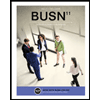
BUSN 11 Introduction to Business Student Edition
Business
ISBN:9781337407137
Author:Kelly
Publisher:Cengage Learning
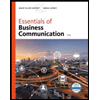
Essentials of Business Communication (MindTap Cou...
Business
ISBN:9781337386494
Author:Mary Ellen Guffey, Dana Loewy
Publisher:Cengage Learning
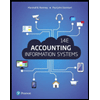
Accounting Information Systems (14th Edition)
Business
ISBN:9780134474021
Author:Marshall B. Romney, Paul J. Steinbart
Publisher:PEARSON
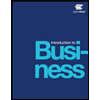
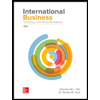
International Business: Competing in the Global M...
Business
ISBN:9781259929441
Author:Charles W. L. Hill Dr, G. Tomas M. Hult
Publisher:McGraw-Hill Education
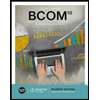
Related Questions
- I need the answer within 15 minutesarrow_forwardTable 3 gives time estimates in weeks for each activity (Durations are Time Expected obtained using PERT) Activity Preceded 1 Order review 2 Order vendor parts 3 Produce standard parts 4 Design custom parts Software development 5 6 Manufacture custom parts 7 Assemble 8 Test Duration 5 15 20 13 18 10 10 5 1 1 1 4 2,3,6 2,5 Resources Ryan Carly Ryan Lauren Connor Ryan Dawn Test Assuming that you have been engaged to programme the project activities indicated in Table 3 and Figure A8.1B (Air Control Project: Time Plan without Resources), USE CCPM (Critical Chain Project Management) to ESTIMATE the project duration by showing each and every stage of your programming process (indicate technical dependency with resources imposed).arrow_forwardQ1: You have the following activities of a project and the time to complete each one (note that the time in weeks) Required: 1 - Draw a network of project activities 2 - Determine the project implementation schedule. 3 - Calculate the completion time for the project implementation and the slack time for each activity. Activity Duration Star Finish Slack ES LS EF LF 1-2 2 1-3 5 2-4 9 2-5 7 2-6 12 3-6 10 4-6 7 4-7 8 5-7 3 6-8 5 7-8 6 8-9 4 Q2: Draw the Network Diagram and determine the Critical Path and duration of the project (in days) Activity Duration Predecessor(s) A 2 ----- B 5 ----- C 9 A D 7 A E 12 A F 10 B, C G 7 D H 8 E I 3 F J 5 H, G K 6 I, J L 4 H, G M 3…arrow_forward
- Q3: Kuala Lumpur Hospital is renovating the emergency department to accommodate more patients during the current pandemic "COVID-19". You have engaged as the project manager for this project and divided the tasks into 11 activities. ALL RIGHTS RESERVED CONFIDENTIAL 2 CONFIDENTIALGUC/ JAN - APR / MPSM230 You are required to draw the Critical Path Method (CPI) and complete all the necessary calculations to figure out the Slack Time. No Activity Predecessor Duration 1 A 0 2 B 3 3 C 1 4 D 2 5 E 2 6 F 4 7 G 2 8 H 4 9 J 1 10 K 2 11 L 0 BUUEFG C D, E E, F F, G H H J, Karrow_forwardQ4arrow_forwardQ1. Using a suitable example each, describe what the following project planning process activities involve: a. Establish project objective; b. Define scope; c. Create a Work Breakdown Structure (WBS); d. Estimate activity durations; e. Sequencing activities.arrow_forward
- Start 10 16 18 20 Weeks after start 4. For each of the following network diagrams, determine both the critical path and the expected project duration! The numbers on the arrows represent expected activity times. a) AOA (Activity-On-Arrow) diagram 5 9 2 10 3 7 8 12 10 3 11 BM HL Assignment 1- Due Date 24 March 2022 b) AON (Activity-On-Node) Diagram 3 18 4 10 6 5 13 2 11 c) AOA (Activity-On-Arrow) Diagram 14 13 5 12 6 15 14 13 ן1 3 16 13 14 15 8. 11 10arrow_forwardProject Management In the below Precedence Diagram ( The activities durations are in weeks ) If the project manager wants to add extra (two) weeks for activity ( F ) and (three) weeks just in case other tasks may slip the schedule. Q: Show the impact of these provisions on the network diagram and recalculate the total project duration.arrow_forward2arrow_forward
- Q1: For the project listed below, find the following items: 1- Total project finishing time 2- Critical path 3- Free float for each task. 4- If Activity B is delayed by 7 weeks. As a project manager explains how this will affect the total project critical path. Activity Duration in Weeks Dependency or Predecessor Activities الفعالية C B P A U T R N المدة بالأسابيع 6 4 3 7 4 2 3 6 الاعتمادية او الفعاليات السابقة C, B, P P A A Uarrow_forwardTopic: Project management Please read and answer thoroughly FAO-Funded Aquaponics Project Launched In Barbados Barbados GIS – The United Nations Food and Agriculture Organization (FAO) has collaborated with the Ministry of Maritime Affairs and the Blue Economy, and local business Adams Aquafarms, on a project to train persons in aquaponics. Aquaponics is a sustainable way of integrating land-based fish farming with plant production. Both are placed in a tank, and the set up allows for them to coexist, with the waste produced by the fish fertilizing the plants, while the plants purify the water for the fish. The training, funded by the FAO, will take place at a demonstration facility, located at Adams Aquafarms, Hopewell, St. Thomas. The FAO is currently targeting 30 entrepreneurs and 10 teachers. Minister of Maritime Affairs and the Blue Economy, Kirk Humphrey, believes the project will be “transformative”, as it has the potential to empower Barbadians. “In…arrow_forwardQ4- For the activities shown in the table using PERT, draws the network diagram and determine the probability that the project is completed within 70 days. Activity T. 17 6. T, 47 A 29 B 12 24 C 16 19 28 D 13 16 19 E 5 14 F 8arrow_forward
arrow_back_ios
SEE MORE QUESTIONS
arrow_forward_ios
Recommended textbooks for you
 BUSN 11 Introduction to Business Student EditionBusinessISBN:9781337407137Author:KellyPublisher:Cengage Learning
BUSN 11 Introduction to Business Student EditionBusinessISBN:9781337407137Author:KellyPublisher:Cengage Learning Essentials of Business Communication (MindTap Cou...BusinessISBN:9781337386494Author:Mary Ellen Guffey, Dana LoewyPublisher:Cengage Learning
Essentials of Business Communication (MindTap Cou...BusinessISBN:9781337386494Author:Mary Ellen Guffey, Dana LoewyPublisher:Cengage Learning Accounting Information Systems (14th Edition)BusinessISBN:9780134474021Author:Marshall B. Romney, Paul J. SteinbartPublisher:PEARSON
Accounting Information Systems (14th Edition)BusinessISBN:9780134474021Author:Marshall B. Romney, Paul J. SteinbartPublisher:PEARSON
 International Business: Competing in the Global M...BusinessISBN:9781259929441Author:Charles W. L. Hill Dr, G. Tomas M. HultPublisher:McGraw-Hill Education
International Business: Competing in the Global M...BusinessISBN:9781259929441Author:Charles W. L. Hill Dr, G. Tomas M. HultPublisher:McGraw-Hill Education

BUSN 11 Introduction to Business Student Edition
Business
ISBN:9781337407137
Author:Kelly
Publisher:Cengage Learning

Essentials of Business Communication (MindTap Cou...
Business
ISBN:9781337386494
Author:Mary Ellen Guffey, Dana Loewy
Publisher:Cengage Learning

Accounting Information Systems (14th Edition)
Business
ISBN:9780134474021
Author:Marshall B. Romney, Paul J. Steinbart
Publisher:PEARSON


International Business: Competing in the Global M...
Business
ISBN:9781259929441
Author:Charles W. L. Hill Dr, G. Tomas M. Hult
Publisher:McGraw-Hill Education
